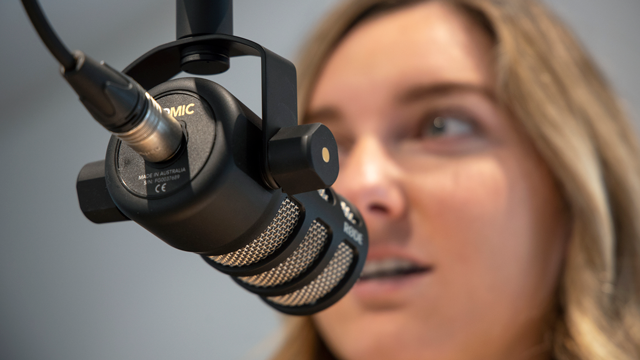Today we are going to discuss a common question we get here at the store – What microphone should I use for my video? Good audio is often more important than good video when it comes to filmmaking. So, how do you choose the best microphone? The best microphone for you will greatly depend on what you shoot, where you shoot and how the microphone picks up sound.
The most important thing to determine when choosing a microphone is how you plan to use it. A few questions to ask yourself are: What am I trying to record? Am I recording a person talking or singing? Am I recording a band or an instrument? Do I want to use it on or off my camera? Do I want the microphone to be visible in the video or not?
The next most important thing to determine is what environment you record in the most. Do you mostly shoot outside, or inside? Do you record in a controlled environment or mostly run and gun?
Microphone Polar Patterns
Once you have established what and where you shoot most, the next step is to become familiar with microphone polar patterns. A polar pattern describes how the microphone picks up sound, or, how well the microphone ‘hears’ sound coming from different directions. Let’s talk about four different types of polar patterns that really apply to filmmaking: omnidirectional, cardioid, super-cardioid and hyper-cardioid.
Omnidirectional
An omnidirectional pattern will pick up sound evenly from every direction, which means that your microphone doesn’t need to be aimed at anything, in particular, to pick up sound. An omni mic will pick up the most ambient sound, which is why it is usually positioned very close to your subject.

Cardioid
A cardioid pattern is unidirectional and will be sensitive to sound coming from a specific direction. It is sensitive to sound coming from the front of the mic and rejects sound coming from the back. Because if this it does a good job of rejecting unwanted ambient sounds.

Super-Cardioid
A super-cardioid has the same characteristics as a cardioid but is more directional, doing a better job of rejecting ambient sounds from the sides of the mic. Unlike the cardioid, it is sensitive to sound directly behind the mic. A super-cardioid works best at picking up audio from a single sound source.

Hyper Cardioid
A hyper-cardioid mic works just like a super-cardioid but is even more directional and rejects even more ambient sound from the sides of the mic. There is also some audio captured directly behind the mic.

Types of Microphones
Now that we have some information to help us make our decision, let’s take a look at the different types of microphones and how they might fit into your workflow.
Shotgun Microphone
A shotgun mic is extremely versatile, comes in a variety of polar patterns and will work in a large variety of situations. Shotgun mics come in cardioid, super-cardioid and hyper-cardioid patterns and are typically used on your camera or on a boom pole. When used on your camera it will capture excellent directional audio from wherever the camera is pointed.

When used on a boom pole it can isolate your subject, allow you to position the mic further from your subject and reject unwanted ambient noise. Be aware that shotgun mics can be more or less directional depending on their construction. The longer the line tube of the shotgun mic, the more directional it will be. A shotgun mic is a great option when you do not want to see the microphone in the shot.

Lavalier Microphone
A lavalier mic is a small, discreet, hands-free microphone that can be placed on your subject or hidden close by. They are typically an omnidirectional polar pattern, which makes it excellent for placing it anywhere on your subject. A lavalier mic needs to be close to your subject and needs to be protected from bumps or abrasions. They are excellent for live broadcasts, documentaries and interviews. You can position a lavalier so it is visible or not visible in the shot.

Handheld Microphone
A handheld microphone is designed to be held in your hand to capture the human voice. The polar pattern can range from omnidirectional to super-cardioid but is most commonly a cardioid. A handheld mic will be the most durable and least sensitive to handling noise. It is great for performers, singers, interviews and live or recorded events. This mic will obviously be visible in your shot.

Studio, Broadcast or Podcast Mic
A studio, broadcast, or podcast mic excels at capturing the human voice. It is excellent for recording vocals, instruments, voice-overs, podcasts and live broadcasts and has a very detailed, warm, rich sound. They are available in a variety of polar patterns but are most commonly a cardioid pattern. They are typically used in a controlled environment and can be connected to a variety of devices. This mic will also be visible in your shot.

While there is no absolute right answer, matching the microphone to the activity and understanding how each type of microphone performs will give you the confidence to choose the best microphone for your unique situation.


1 comment
Michael Kazzak
Could you print or include in your answer the approximate cost of these microphones, please? Thank you!
Michael Kazzak